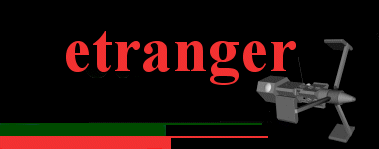Embuscade Class
Corvette
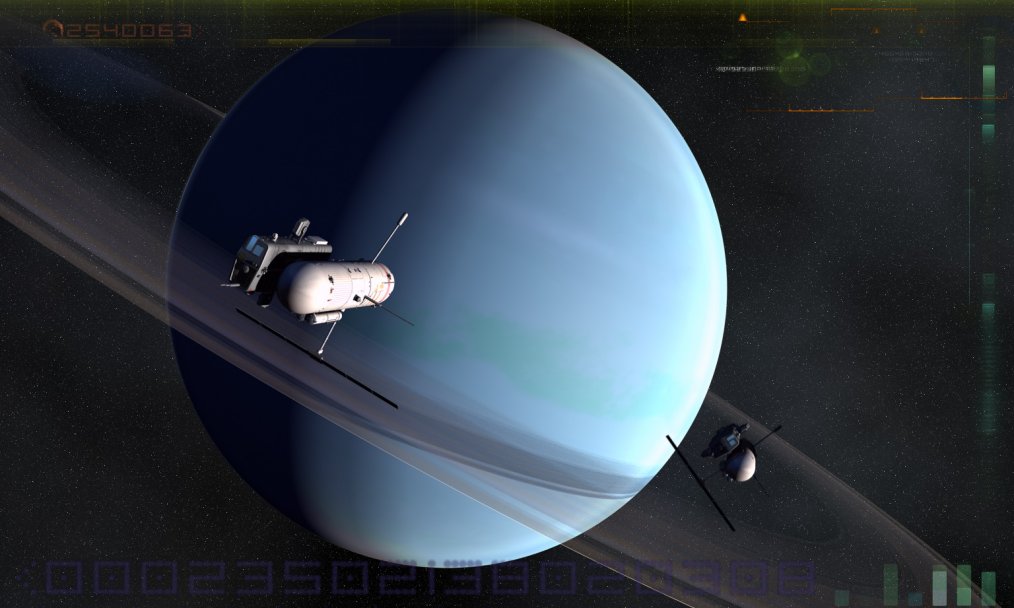
|
Introduction The Embuscades are a French designed war expedient class of fast corvettes designed to operate as picket ships at key points in important systems or as fast striking system defence boats. They are built from existing and easily accessible off the shelf components and can be rapidly built even at the smallest shipyards. They are insystem ships, although can transit interstellar if required, whose role is to gain information for more powerful ships, guard remote discharge locations and when required launch attacks on the flanks of enemy formations. Narrative
It was for real this time the skipper
realised. Dozens upon dozens of Kafer heavy ships were flooding into the Queen
Alice’s Star system. The distortions on his auxiliary grav sensors made that
plain to see although at this range any sort of clear readings were impossible.
The intelligence their screen had brought them was true, the Over Suzerain was
finally making his move and coming for the Reserve Fleet, bolstered as it was
by the surviving warships of the French Arm. The Commandant
d'Urville hung high above Unferth guarding the huge gas giant which lay
outside the star’s FTL shelf but could be easily used by an enemy to discharge
its drives and bypass the inner system. There had been several encounters with
the potent India Class destroyers around Unferth and now Commandant
d'Urville was at the centre of a web of sensor drones and mines. She could
expect little help now though with the Reserve Fleet and the System Defence
Force massed to face the Kafer Task Force. The skipper, an MSIF reserve officer and
a veteran of the Richelieu thought Commandant
d'Urville a small and unlovely ship, cobbled together from various merchant
ship components, spare sensors and weapons and thrown into space. The
conditions were cramped and duties long, arduous and unglamorous. In almost two
years of service at QAS the ship had contacted the enemy only twice, but had
aided in the destruction of two Indias by other warships. Alarms began to sound on the bridge, and
the skipper pulled himself firmly into his chair, keying his consol. ‘Sir, we have multiple contacts coming
across the Unferth FTL shelf. At least ten major units. I have more grav echos
right behind them.’ The captain started, were the Kafers
trying to slip a squadron past the Reserve Fleet? ‘More contacts! Twenty plus,
I have fighters!’ Or worse, were they fixing the fleet
with a large squadron and trying to bypass with the main strength of their
fleet? ‘Power up, we have to warn the Fleet.’ Extract
from the novel based on the screenplay ‘Last Flight of the Dumont d'Urville’ Index
Service History
|
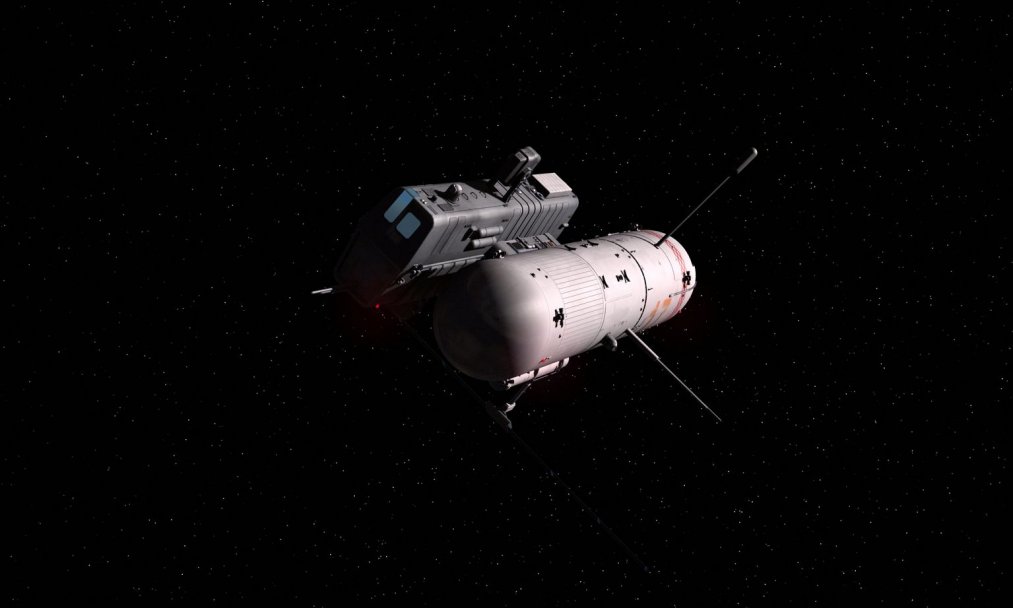
Development History
The Embuscade design was drawn up by L’Tage, a major French producer and designer of civilian ships in response to the Kafer invasion of 2301-2. L’Tage made an unsolicited proposal to the MSIF for an in-system craft that could fulfil the system defence role, feeing up dedicated warships to oppose the powerful Kafer battleships. These corvettes were to be relatively cheap but very quick and easy to build using existing components and commercial methods. It was also to take a novel approach to its crewing arrangements with short duration rotations and a small crew. The MSIF could see the value in L’Tage’s approach but eventually went with the TD-115 design that would become the Arcturus Class destroyer. L’Tage did create a proof of concept prototype that launched in 2303 but failed to interest the MSIF despite performing well in trials in Alpha Centauri. The prototype was eventually sold off to Heidelsheimat in mid-2304 as a revenue cutter, further limited overseas sales took place to allied nations in the year that followed. The renewal of the Kafer War in 2305 and the loss once again of the Eta Bootis finger except for Aurore caused a crisis in ESA and other nation’s ship building. France, Britain, Germany, America and others all had ships on the slips to replace those they had lost, but it was now apparent that many more would be needed. In Dec 2305 Emperor Ruffin personally ordered the MSIF to order a multi-ship buy of L’Tage’s corvettes to be built in small yards and repair facilities as part of a massive ramp up of ship building. The first ship was completed inside of three months and dispatched to the French Arm conducting trials on the way, many more were to follow manned by recalled crews of reservists. There were significant misgivings in the MSIF about the survivability of these ships, but there was also the realisation that humanity stood on the edge of disaster on the French Arm and desperate measures were called for. The more pragmatic officers knew also that these ships would replace privateers and impressed merchant vessels in many roles.
|
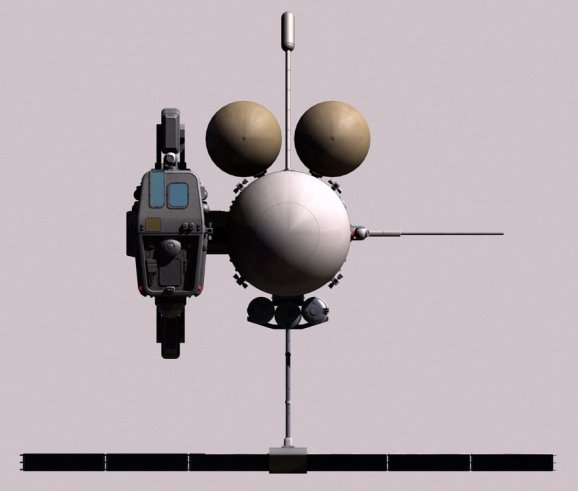
|
Embuscade There were five key design
characteristics for the Embuscade. These were:
-
Two part ship hull. One part comprising engines, fuel and other major
systems and the second part comprising crew areas and control systems.
-
Modular approach to internal systems allowing customised avionics,
sensors and other systems. This allows production of ‘high end’ and ‘low end’
models dependent on available components.
-
A non-energy armament suite capable of protection against fighters and
self defence against heavy vessels to enable a retreat.
-
A non-standard crewing system for maximum week long in-system mission
duration.
-
A commercial 5MW powerplant powering one of two 5MW stutterwarp drives
allowing maximum speed at WE 3.14 or 3.42. Hull design The hull is composed of
two distinct parts all of which are lightly armoured.
-
The large cylindrical hull contains the main engineering systems of the
ship including powerplant, drive, fuel tankage and other high volume equipment.
- The rectangular
hull is divided into two decks: - Upper
deck: A small bridge area with 4 workstations (pilot,co-pilot/nav,
com/computer, engineer) of which only two of these are permanently manned
during normal flight. There is then an avionics bay and the mission area
with four side by side multifunction workstations including sensor detection,
mission management and two WSO. To the rear of this deck there is an airlock
and docking ring. - Lower
deck: galley suitable for 4-5 crew, a passageway on the left side with storages
on a side and individual accommodation cells on the other side, the sanitary
installations, the remote damage controls for the engineering hull and the
emergency access into the engineering hull. Overall dimensions:
-
Tonnage: 298 tonnes (unloaded) Armament The Embuscades are
initially produced with a non-energy weapon fit to maximise energy delivery to
engines and sensors. This usually includes: -
2 x LL-3A Submunitions dispensers. (three cells
with one 5x2 or three 3x1 or 6 1x1 sub munitions) Electronics Sensor systems are
provided by Darlan Opto-Physique and were developed from those used on
the Arcturus Class ships although active sensors are hampered by a more limited
array.
-
Active with one working station:
-
DSAP S-2252bis. (Active: 7)
-
Passive with two working stations:
-
DSMSP S-2230T (Passive: 10)
-
Standard Navigation systems, Gravitational sensors, Deep system
scanners. Engineering Systems
-
Power Plant: Alsthom 5MW OM MHD.
-
Drive: Alsthom Old Military
5MW stutterwarp drive or Rouchard NM 5MW stutterwarp drive. Crew The Embuscade has a
total of 11 crew. There are normally two sets of crew which are rotated on
alternate patrols:
-
3 pilot/nav.
-
4 sensor/WSO
-
3 engineering.
-
1 in medical. The ship has no artificial gravity and has very cramped quarters resulting in an often unpleasant working environment.
|
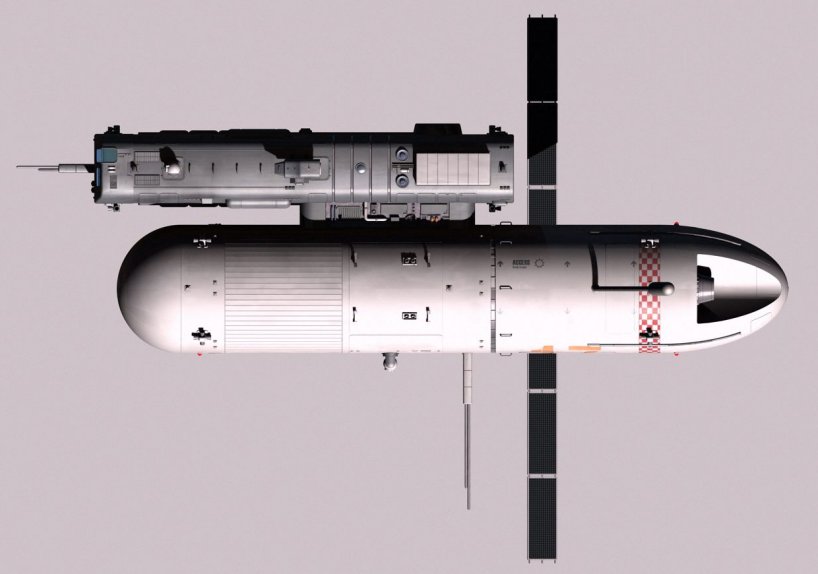
|
Embuscade Warp Efficiency: 3.14
or 3.42 Life Support: 25
days (12 personnel), Comfort: -2, Price: 25.5 or 38.7 Mlv Ship Status Sheet:
Hits Bridge: Pilot, Co-pilot/nav, com/computer, engineer. TAC: Sensors, 2 x Fire
Control, Captain Hull Hits: 19/10/5 Power Plant Hits: 10/2 Damage Control: 1 Armament 3 x Ritage-1D or 3 x Ritage-2 |
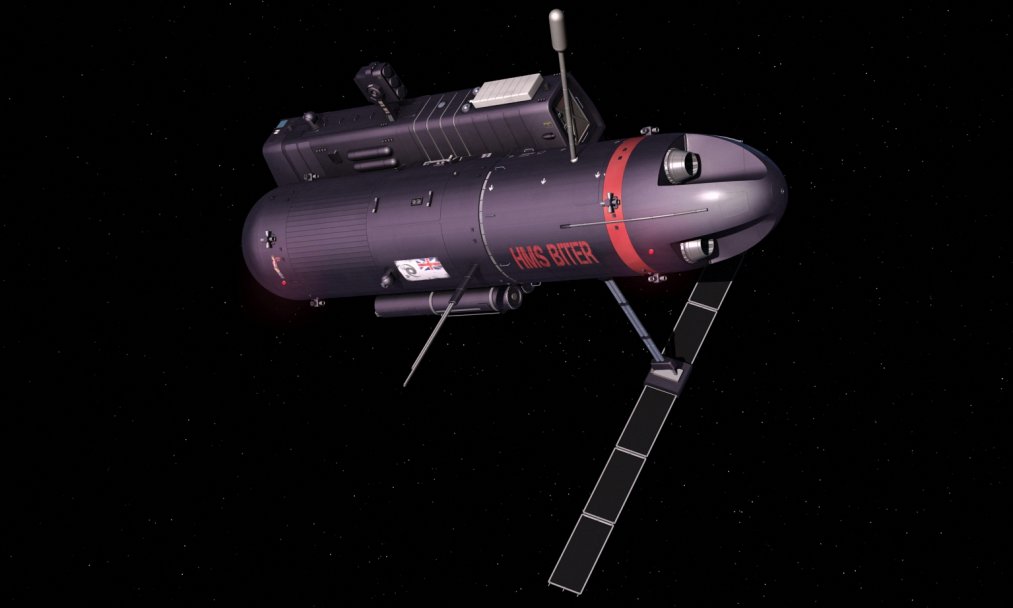
|
France France purchased no few than 33 Embuscades during the duration of the Kafer War, a buy also supplemented by a number of Freihafen built Myrmidons. They were the smallest French ship to receive official names, although the naming conventions varied depending on location of build but were generally named after heroes of the MSIF. There were three initial batches ordered from French shipyards above Terra, Tirane and two built at Beowulf. These were followed by subsequent batches at both French and allied shipyards. The bulk of these ships were manned with crews from the MSIF reserve, initially drawn from the regular reserve and then from volunteers from French in-system merchant crews. It was the latter crews who generally were regarded as more successful. The MSIF also ran a system of producing and manning Embsucade’s jointly with allied nations. These nations included Morocco, Spain, Italy, Tunisia, Poland and others. These ships were fully integrated into the MSIF but gave these nations a stake in the space battles that would decide the fate of the French Arm while defraying French costs. Allied crews generally were drawn from already qualified civilian starship crews, but in some cases volunteers from planetary military forces were accepted and trained in a shortened course while the craft was constructed. At least a further 18 ships were built in this manner and although casualties were significant many survived to pass into service with the allied nation, usually with OQZ, or demilitarised and sold on. The vast bulk of the ships were deployed into the French Arm in 2307-9 as pickets on the long run between Sol and QAS. A dozen were sent into the BC Cluster however due to the fluid situation and lack of true interstellar capability casualties were heavy and most survivors lived a hand-to-mouth existence as pickets for the few squadrons that continued to operate on the fringes of the cluster following the slow defeat of the Third and Fourth Fleets. The ships deployed at QAS worked in concert with the Reserve Fleet and System Defence Force to monitor the systems discharge points and provide early warning. These ships were often deployed for far longer than planned with merchant ships providing refuelling and replacement crews to allow them to stay on station. Significant numbers served with the System Defence Force and saw heavy action in the battles following the departure of the Reserve Fleet to Nibelungen from the concealed base above Grendal. The ships on the thin line of stars back to Sol also provided early warning although could sometimes fall prey to marauding India Class ships. Their finest hour came following the bypass of the Reserve Fleet at Beowulf when they helped track the Over Suzerain’s Task Force on its way to Nibelungen. Several Embuscades were present at Nibelungen and made a significant contribution on the flanks of the main battle and in the scouting role. Following the Second Liberation the Embuscades were dispersed across the French colonies as guardships to help protect from Kafer stay-behinds. They were also deployed to try and secure lines of communication through the Eta Bootis Finger for the assault into Kafer Space. A mere 21 ships survived the war and most were paid off or put into reserve on the conclusion of hostilities. Eight have been reactivated however to reinforce regular forces in systems like Kimanjano where French colonies have proved restless. Britain Britain was an early purchaser of the Embuscade as a planned and cheap replacement for its significant losses in system defence craft during the war. The ‘Ambush Class’ filled a gap between the ageing Exeters and fighter craft whilst retaining a significant punch. The ships were built, including several British components, at Terra, Tirane and Beowulf. Notable was the funding and crewing of four ships by Wellon, the start of Wellon’s independent space naval capability. 12 of these ships saw service initially with four at QAS, four at BCV and two each at Joi and Henry’s, while a further dozen were later procured. The RSN ships were generally used more in the strike role, than the MSIF ships, although the later batches were similarly committed to the security of the Sol-QAS route. The ships committed to the BCV Cluster saw heavy action and subsequent casualties, while the survivors operated for a number of years from the edges of the Henry’s Star system with the help of local belt miners. Famously only HMS Biter would survive from the ten ships eventually deployed. The ships would later serve as guard ships for British colonies and for logistics bases prepared for the invasion of Kafer Space, but would not go ‘Beyond Arcturus’ in British service. With the increase in warships coming into service the Ambush Class declined in importance and a number were sold off and others gifted to colonial cutter duties on the French Arm and at Devillebis Station. Nibelungen In 2307 the German colony world produce a number of licence built Embuscade’s to bolster its Raumwaffe force. This became a political matter between France and Germany and the colonial government as Germany believed this was using shipbuilding capacity better used by the DSKM. Ultimately Nibelungen built six Embuscades of which only three survived the Battle of Nibelungen, although the Embuscade squadron made a notable and valiant contribution in the doomed defence of the vital ‘arsenal ships’ that caused the Kafers so many casualties. A further ship was completed and the
squadron remains in service with the Raumwaffe and has been recently modified
and upgraded. It often works in the OPFOR role for the Raumwaffe as well as
filling revenue cutter duties. Other Nations The market in surplus small warships in the wake of the 2nd Kafer War was something of a crowded one, however there was a market for the Embuscades amongst small recently independent colonies looking to create system defence forces. Heidelsheimat purchased an additional three to bolster its initial prototype. Tanstaafl even picked up a pair at knock down rates for its nascent space force for example. Some ships were demilitarised and passed into the hands of commercial concerns, although some later were believed to be involved in piracy. A number were sold to non-starfaring Terran nations looking to bolster their public standing.
All images are by Laurent Esmiol. This design is not consistent with NAM rules for crewing, instead aiming to represent a smaller combatant than a traditional warship. |
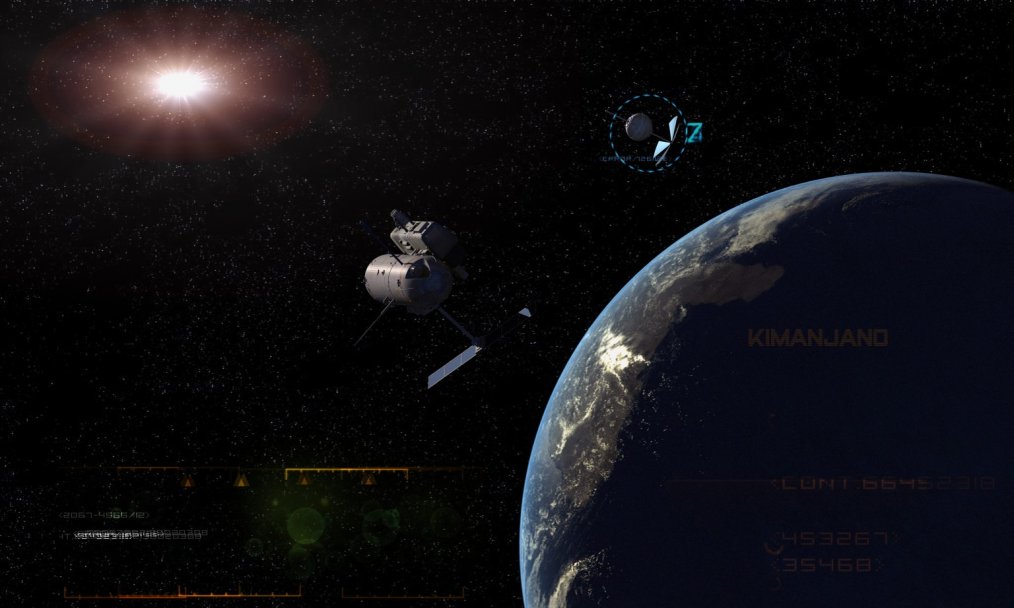
Copyright, 2009 Laurent Esmiol and D Hebditch
|
